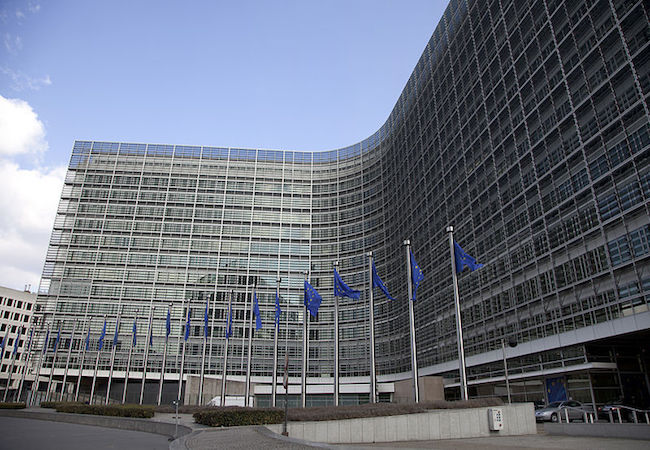
J. Scott Marcus and Georgios Petropoulos
Consumers, retail shippers, and European and national regulatory authorities could benefit from enhanced visibility into the price of shipping goods across borders in Europe.
The European Commission released a multi-faceted plan to boost e-commerce in Europe on 25 May. The plan includes provisions to increase the transparency of prices for cross-border parcel delivery, with an eye to lowering prices as a means of increasing European e-commerce.
What exactly is meant by transparency? Who needs visibility into what, and why?
Based on a preliminary reading, the Regulation on e-commerce that the Commission has just proposed seems to be very much in line with the general principles that we sketch out here.
High cross-border parcel delivery prices as an impediment to cross-border e-commerce
Almost 4 billion parcels are ordered online and delivered every year in the EU. The potential for e-commerce is however far greater – while 44% of consumers buy online in their own country, far fewer (15%) order online from another country. One of the biggest obstacles is the high cost of cross-border delivery. EU consumers could save over €11 billion each year if they chose from the full range of goods and services available when shopping online. Cheaper and more transparent pricing could also encourage more retailers to sell online.
The Commission announced in its Digital Single Market (DSM) strategy that it will work on improving regulatory oversight in the parcel sector and will look into the issue of price transparency, including the prices for basic delivery of parcels for small retail shippers.[1] Express and courier shipments are generally felt not to be an issue, because many firms in this space are vertically integrated and compete with one another. The prices that small shippers pay for basic delivery are widely felt to be the area where concern is warranted.
Vice President Andrus Ansip (who is in charge of the Digital Single Market) said in his statement at the May 2016 Bruegel event on cross-border parcel delivery and e-commerce: “If Europe is to have a high functioning DSM, it must also have affordable and high-quality cross-border parcel delivery services. We want to make parcel delivery cheaper, more efficient and transparent – and hopefully reliable too, with more choice for consumers.”
As we explain in our companion paper, “E-Commerce in Europe: Parcel Delivery Prices in a Digital Single Market”, small retail shippers have consistently indicated that high cross-border parcel delivery prices are a serious barrier to their ability to conduct online business in other EU Member States. Small shippers appear to have few alternatives to shipment by the national postal operators, and often pay them the full published price. There are legitimate reasons for cross-border shipment to cost more than domestic, but actual published prices seem to be far higher in many Member States than can be explained solely on the basis of known differences in costs.
Shining a light into the gloom
During his talk, Vice President Ansip called for transparency as regards retail prices of national postal operators for 15 different categories (standard, registered and track and trace postal services of different weight categories) of letter and parcel delivery. This is entirely appropriate, in our view, but it again begs the question: What exactly is meant by transparency?
As we have explained in our companion paper, hardly any publicly available data exists today on:
- actual payments between EU national postal operators as recompense for parcel delivery in another member state – the nominal global caps set by the Universal Postal Union (UPU) are known, but not the actual payments;
- parcel delivery volumes between the member states; and
- the fraction of shipments that benefit from negotiated discounts, nor the degree to which prices are discounted.
It is difficult to see how sound policy can be crafted and maintained in the absence of even the most basic understanding of the economics of the sector. These gaps have been long-standing – they were already flagged in the postal Green Paper of 1991, which led to liberalisation of the sector. They are not likely to correct themselves spontaneously. Since the information gaps relate to cross-border issues, they cannot be properly addressed solely by actions at member state level (which likely would be mutually inconsistent in any case in the absence of European coordination). The need for action at European level therefore seems clear.
In the public discussion, transparency however often blurs together two very different dimensions:
- visibility and simplicity of retail prices offered to consumers (addressed in paragraphs 1 and 2 of article 4 of the Regulation); versus
- visibility by European and national postal regulatory authorities into the economics of the sector (addressed in paragraphs 3 and 4 of article 4 of the Regulation).
What consumers and small retail shippers need is clarity and simplicity in pricing. This could arguably include standard published discounts for avoided costs where the shipper takes on burdens that would otherwise fall to the national postal operator, such as pre-sorting and delivery to the destination post office.
Not all information can or should be made public. For instance, we do not suggest that the contracts and discounts negotiated with large volume shippers be made public. The national postal operators are businesses that face either competition, or at least the threat of competitive entry. These contracts are legitimate proprietary business information, the public disclosure of which might well reduce economic efficiency in many ways.
Regulators at European and member state level need greater visibility into cross-border parcel economics in order to properly do their respective jobs. As we have explained in our companion paper, an understanding of the payment flows among the national postal operators, the “spreads” between those payments and the nominal published prices in the member states, the degree to which prices paid by medium to large shippers differ from those paid by consumers and small shippers, and the volumes of shipments of various types between the member states are essential. In general, aggregated data could be sufficient for these purposes.
How to provide regulatory authorities with the detailed information they need, without opening business-sensitive information up to the public, poses issues of institutional design; however, these challenges can be addressed. Similar problems have already been solved in other sectors (see BEREC 2016).
J. Scott Marcus is an independent consultant dealing with policy and regulatory issues related to electronic communications. He is best known as an economist, but his academic training is as a political scientist (with a specialty in public administration) and as an engineer. He is based in Brussels, Belgium, and in Bonn, Germany. Georgios Petropoulos joined Bruegel as a visiting fellow in November 2015, and he has been a resident fellow since April 2016. His research is specialized in industrial organization, competition policy, corporate finance and economic growth. His work at Bruegel focuses on the digital economy, the market definition in the digital era, the economic value of big data and the generated privacy concerns, and the welfare implications of the emergence of the sharing economy.




